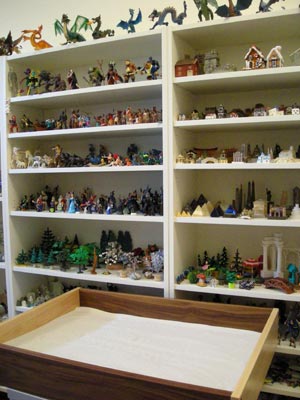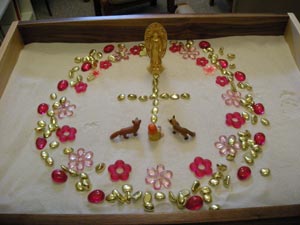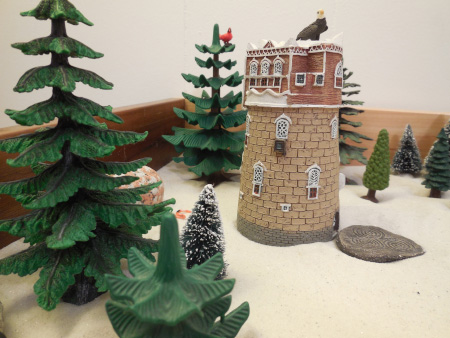
Sandplay
was developed by Swiss analyst Dora Kalff, influenced by the
“World Technique” therapy of British child psychologist
Margaret Lowenfeld, who in turn had been influenced by H.G.
Wells' “floor games” with his two sons. It basically
consists of a sandbox at about waist height and a profusion
of miniature figures with which to make a picture. Clients are
invited to use this “free and protected space” (Kalff)
to create whatever comes to them in the moment. It is a largely
non-verbal process; analyzing the sand trays usually takes place
some sessions later. A photographic record is kept of the different
trays, and like a dream series, it can illustrate the transformation
and healing process.

|
|
Jung did not use sandplay as a formal technique. However, in
his own confrontation with the unconscious, he found himself
spending hours at his “waterworks,” an elaborate
creation of canals and buildings on the shore of Lake Zürich.
Already an adult and doctor, he felt compelled to play as he
had with such fascination as a boy. “I went on with my
building game after the noon meal every day, whenever the weather
permitted. As soon as I was through eating, I began playing,
and continued to do so until the patients arrived; and if I
was finished with my work early enough in the evening, I went
back to building. In the course of this activity my thoughts
clarified, and I was able to grasp the fantasies whose presence
in myself I dimly felt.” At other periods of confusion,
he turned to painting and stone carving.
Sandplay is a wonderful creative activity:
it is very satisfying
and requires no artistic talent whatsoever.
| 
|
|
Often
the hands know how to solve a riddle with which
the intellect has wrestled in vain.
--C.G.
Jung (CW 8:180) |
|